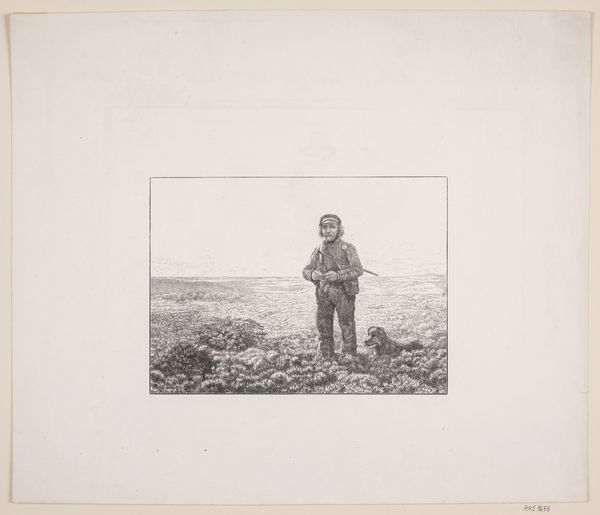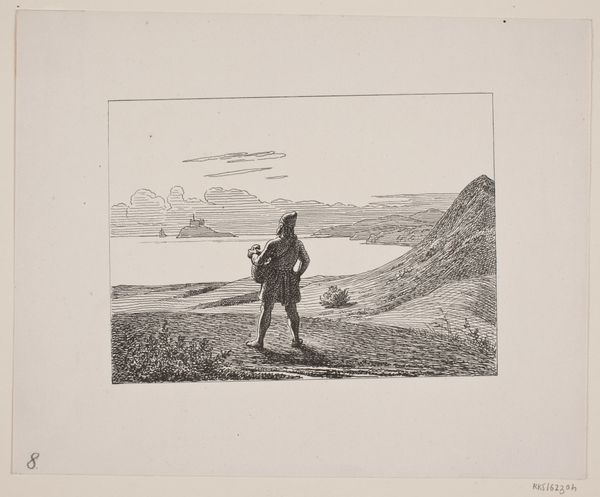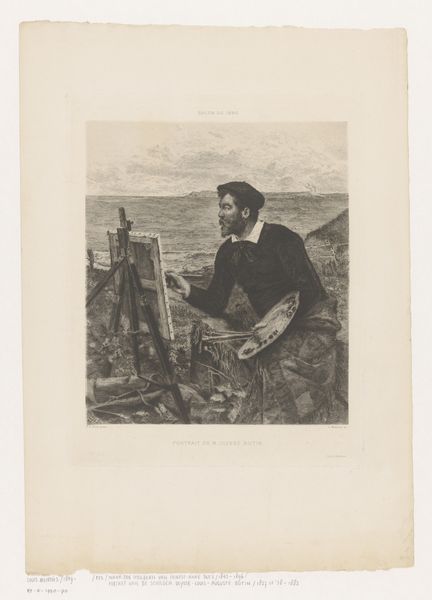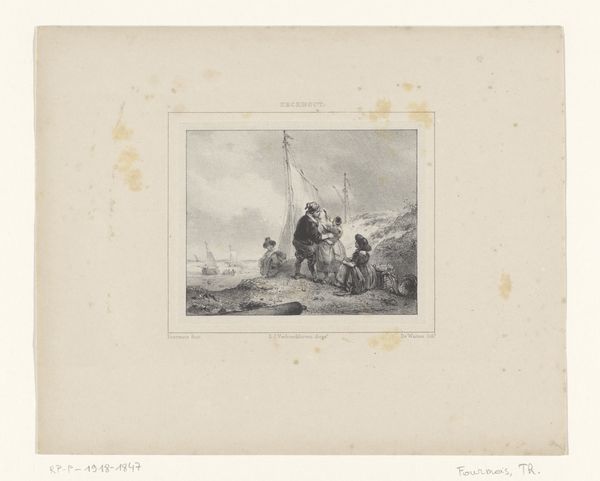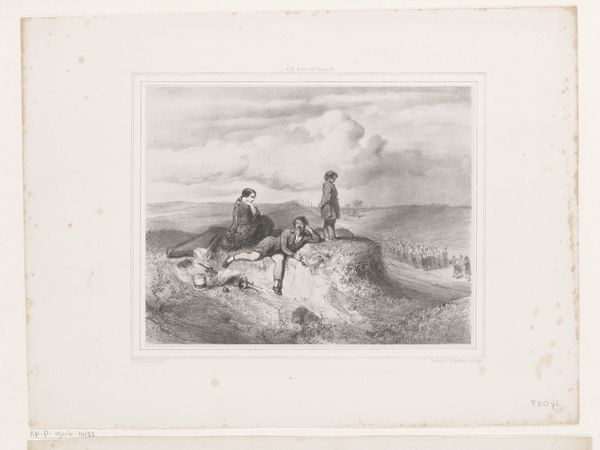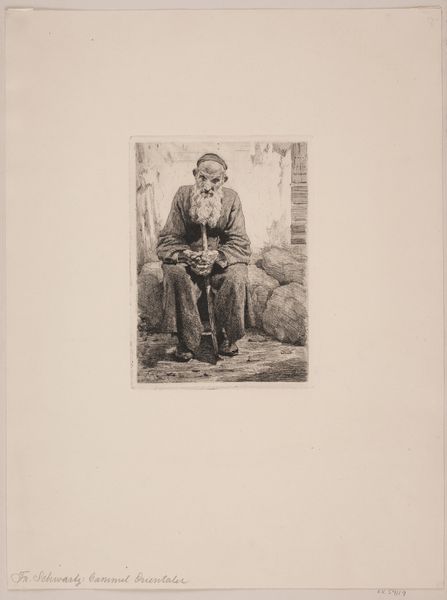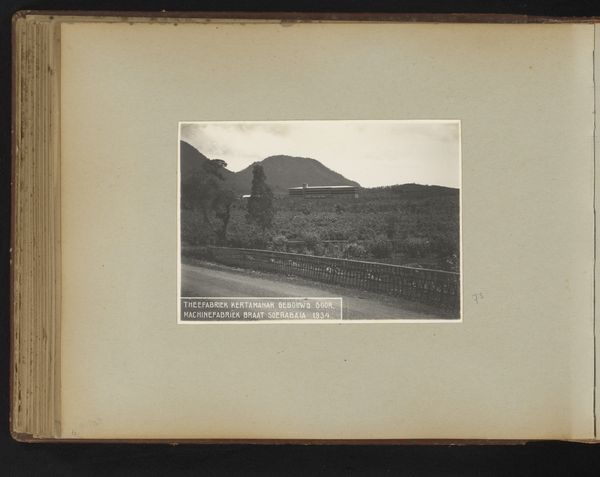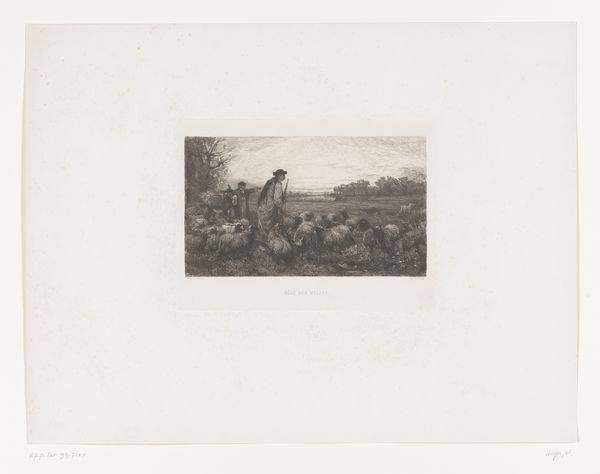
Dimensions: 285 mm (height) x 399 mm (width) (billedmaal)
Curator: I find myself drawn into the solitude conveyed by this print, it’s mostly monochromatic, almost sepia-toned. Editor: That’s interesting, because “A Jutland Shepherd on the Heath,” an 1880s lithograph by Adolph Kittendorff, really speaks to the intersection of Realism and Romanticism in portraying the rural population. The print also touches on growing nationalism at that time. Curator: The scale adds to this feeling. We see this solitary figure of the shepherd accompanied by his dog; these subjects are so minute compared to the immensity of the landscape that enfolds them. It's all achieved with such subtle gradations of tone. Editor: Yes, consider the Jutland heath. It had been historically regarded as marginal land, and this work helps us understand its social value through the representation of a sympathetic protagonist and pastoral setting. Curator: Indeed, it really draws on notions of isolation that feed into that nationalistic rhetoric, which I believe are enhanced by the artist's choice of printmaking. The hazy distances that we glimpse through lithography become part of its message, creating both beauty and mystery in one artwork. Editor: Lithography allowed for widespread dissemination of imagery; we have to recognize that the production and consumption of such works helped normalize certain national mythologies around the hard-working country folk. Curator: It's as if we’re sharing an intimate moment with this humble guardian of the land; although at first it might appear stark, there's such nuanced control here. The textures – see how the land recedes to nothing but the sky – it is pretty captivating. Editor: This really showcases the cultural moment, illustrating the role of art in creating icons and shaping cultural understanding within a society undergoing modernization and industrial expansion. Curator: Considering the scale, the landscape has this ability to transform a somewhat ordinary, genre-based scene into something majestic. What are your final thoughts about the function of this image? Editor: It stands as a reminder that art often serves specific agendas and power structures; it’s a lovely piece in many ways, but it makes me wonder how pastoralism was constructed during that particular period. Curator: I suppose for me it boils down to technique; that single quality allows the art piece to deliver all these rich narratives in the first place.
Comments
No comments
Be the first to comment and join the conversation on the ultimate creative platform.
